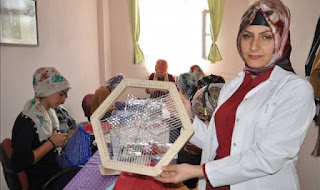Prescribing a code for PILs - II

In my last post I had written about PILs and the need expressed for having a code on regulating them. But then, as usual, my friend pointed out that there was a much felt need on its improvement and so here I begin the second part. I have already dealt there with why do we need a code to regulate PILs so will work upon other issues and concerns relating to that.
Firstly, what would the code do and is it desirable?
The very purpose of bringing a code is to ensure that the PIL route to raising litigation is not abused. Therefore it would contemplate an initial screening which would be meant to prevent those petitions were serve no greater purpose rather than abuse, as the court have branded them often; 'private interest litigation' 'paisa interest litigation' etc.
This screening, I am of the opinion, will be in the manner of prescribing minimum standards or qualifications for allowing these petitions to be entertained. Like as have a very vocal Registry at the Supreme Court, which ensures that all the columns soliciting the information for filing appeals and writ petitions are fulfilled to their satisfaction before the case reaches the Bench. Similarly I believe, certain mandatory disclosure norms would be required to be filed and additional affidavits needs to be signed before a PIL would be entertained, onces these guidelines come into effect, only to ensure that only genuine petitions go through. Then the notion of costs can also be brought in, with costs being imposed on a more regular basis against frivolous PILs, something which is already in vogue in Court 4 now.
But then the problem arises only because of that. There cannot be a panacea for all cases. The very fact that normal petitions cannot be filed has left with no alternative but PIL. So if you impose too stringent a criteria, it would be killing the flower in the bud itself. Most of the petitions which require a consideration would not even be able to reach the Bench and thus the entire purpose of making a mechanism for these issues to be addressed would be frustrated. For example, the requirement to prove bona fides is in itself a subjective criterion and thus cannot be put in to closed ended answers of yes or no.
Further, by prescribing a check-list of sorts, the Court in turn would be putting its own thoughts as to what is a good 'PIL', something which looks good on the academic side but does not reconcile with the ground-realities. For example, the then Chief Justice J.S. Verma treated a simple letter sent by a grieving mother on the brutal treatment meted out to her son in police custody, we had the famous case of Nilbati Behra v. State of Orissa, which went on to lay guidelines of custodial treatment and consequences of custodial death. Now if guidelines were laid down and their strict compliance insisted, it may even be possible that such genuine cases may never be able to claim justice.
And then the important concern. Would it be possible, if stringent guidelines are imposed (as the recent trend of the Court promises) that a not-so-well-doing lawyer is able to file and pursue PILs? After all the internal politics of the courts is also a major player influencing the outcome of cases before it. When it comes to admission of matters, most of the cases are dismissed at the threshold only for the reason that there appears no Senior to impress upon the Court that there is merit in the case. Ordinary lawyers are supposed to be satisfied only with appearing during arguments stage and assisting Seniors. And this does not in any terms reward him/her for the research, investment and time spend on the preparation of the case, which a Senior doesn't. So here goes the change of not-so-well-doing lawyers to come into vogue by handling cases involving grave miscarriage of justice and raised through PIL format.
Especially when the success of legal-aid-cells in India cannot be vouchsafed with certainty, literally closing the PIL route by imposing stringent qualifying criteria for entertaining PILs is another reason why the present proposal should be handled with care and in view of the huge ramifications of the issue.
I am not suggesting here that no guidelines should be made but my only case is that while framing these guidelines enough leverage should be retained that the genuine and in-need cases are not shunted out on technical grounds.
Now for the picture part. You would be wondering whose picture it is. Well, he is one who can be rightly called as the Father of PIL in India. Registering more that an a century of PILs on his own name, he can be attributed for changing the legal and environmental scenario of India by a long way. He is no other than Mr. M.C. Mehta. A quick search on Youtube returns umpteen search video results made or dedicated upon him [click here for the videos] The CNG buses in Delhi, removal of industrial units from Agra for saving Taj Mahal, Oleum Gas leak case, and the recent Delhi Ceiling case etc. have all been due to him, thanks to his philanthropic gesture and attempt for making this country a better place to live in.



Yorumlar
Yorum Gönder